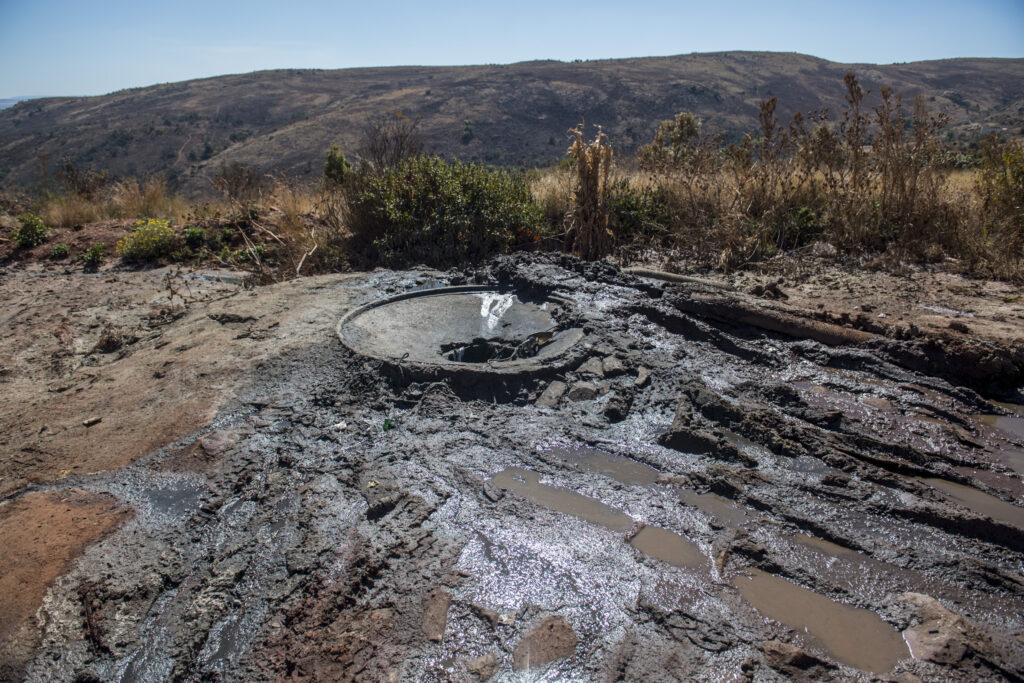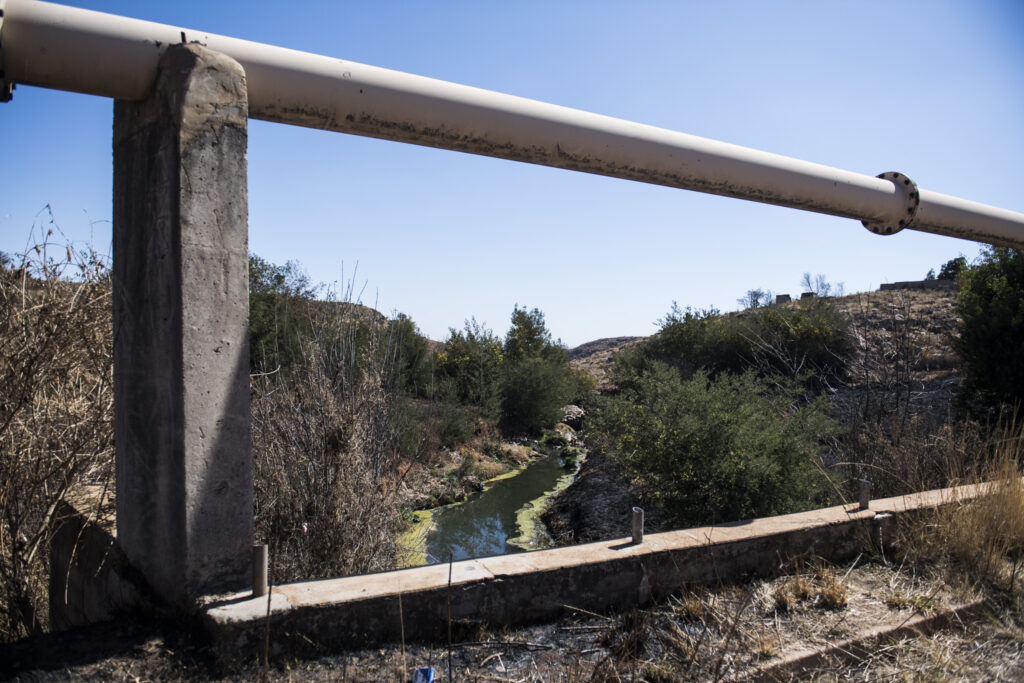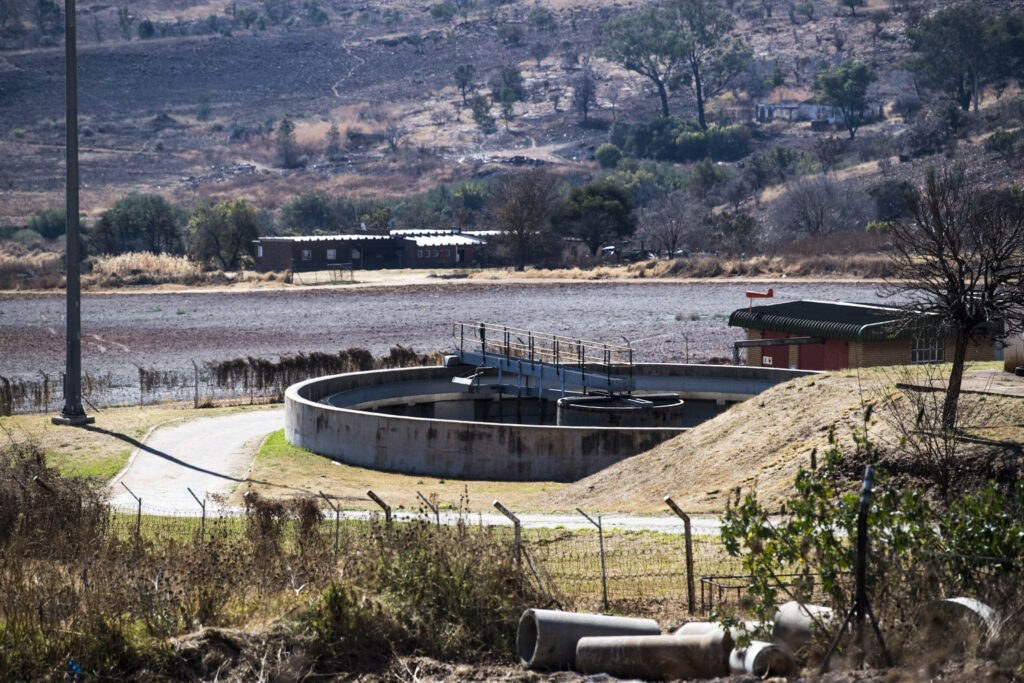(Delwyn Verasamy/M&G)
Uphill from the Percy Stewart Waste Water Treatment Works (WWTW) in Mogale City is a special manhole for dump trucks that is used to unload human waste collected from septic tanks.
The manhole has been neglected by the city’s authorities over the years and cannot handle the volume of waste that is dumped there regularly. As a result, trucks can often be seen dumping waste on the side of the hill close to the Blougatspruit river.

Percy Stewart water flows into the Blougatspruit, which discharges into Riet and then into the Bloubankspruit that runs through the Cradle of Humankind — a Unesco world heritage site that accommodates the fossil hominid sites of Sterkfontein, Swartkrans, Kromdraai and environs.
The stench is unbearable and when the Mail & Guardian visited the area earlier this month, animal carcasses had been dumped on the side of the manhole; skulls and horns were scattered about. A cloud of flies buzzed around as two men, who did not wish to be identified, loaded the dead animal remains on to their bakkie. The carcasses are regularly sold to the gelatin factory close to the wastewater treatment works, they told the M&G.
Waste from the decaying carcasses, high levels of toxic minerals and faecal matter run into the same river that forms part of the Cradle of Humankind world heritage site.
The United Nations body has given the government until December 1 to provide it with an updated report on the state of conservation of the property as well as the implementation of various conservation plans to protect the site.
But all measures to clean this blight up have stalled at Mogale City. A tender to provide the plant with chlorination services was advertised by the municipality last year but has not yet been issued. Repeated queries by the M&G failed to be answered by the municipality.
 (Delwyn Verasamy)
(Delwyn Verasamy)
According to the water and sanitation department’s spokesperson Sputnik Ratau, the municipality failed to implement its own action plan regarding the turnaround of Percy Stewart which was presented to the department last September and had a deadline of February this year.
Ratau said that the contractor appointed by the municipality as part of the turnaround plan did not complete the work contracted to them. The municipality did not appoint personnel who are key to the operation and maintenance of the works.
“The municipality also did not enforce their by-laws to ensure that both the industrial discharges and the septic tank deliveries meet required standards. As per results, the uncontrolled discharges affect the operation and maintenance of the plant including the refurbished unit process,” he said.
The department has now issued the municipality with a directive to force it to comply with operation and safety standards. Failure to do so could result in the department initiating civil or criminal litigation against the municipal manager as the accounting officer of the municipality.

Meanwhile, Percy Stewart, which serves Krugersdorp, Noordheuwel and Quellerie Park, as well as Munsieville township, is a cesspool of bacteriological pollution which poses severe risks to the health of humans and animals living in the area as well as the heritage status of the Cradle of Humankind.
Over the past year, various laboratory tests conducted by DD Science, an independent laboratory, show that water quality has deteriorated. Water samples were taken upstream and downstream of Percy Stewart and the pollution is confirmed to be emanating from the treatment plant.
The samples taken also revealed that the faecal coliform (bacteria and waste from intestinal tracts of vertebrates, including humans) in the water has drastically increased in the past year. If wastewater at Percy Stewart was being effectively treated and chlorinated before it was released into the environment, the amount of faecal coliform would be significantly less than recorded.
Independent laboratory results have shown that there is a high concentration of sulphates, phosphates, nitrates and ammonia in the water. This is not conducive to water life, animals nor humans.
In the last meeting between municipal officials and civil society organisation, Cradle of Humankind World Heritage Site Association, which was held in August last year, the municipal officials said that there is currently no budget to refurbish the worn-down treatment plant.
